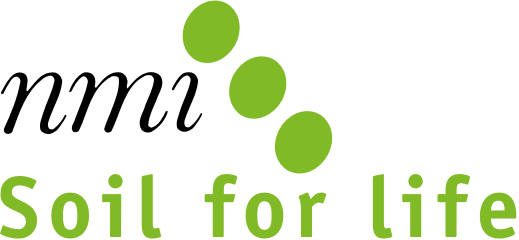
From both the private and governmental sector there is an increasing interest in carbon credits that can be used to offset emitted carbon. Soils constitute the largest terrestrial storage of organic carbon and can play a role in mitigating climate change. Soil management practices on arable soils can increase soil organic carbon storage, and have co-benefits such as increased soil fertility and resilience to climate change. Since the soil organic carbon (SOC) content cannot be easily measured with high precision, there is the need for credible and reliable measurement, monitoring, reporting and verification, both for national reporting and for emissions trading. Recent years, multiple protocols have been proposed and established. In 2020 we reviewed a number of these protocols for potential application in North-Western Europe with respect to their ability to accurately measure the current SOC status (Ros, 2021).
As said, a key obstacle in the development soil-derived carbon credits is the lack of a reliable and affordable method to ascertain increases in soil carbon stocks over time. NMI presents a Proof-of-Concept (PoC) for a robust, cost-effective and scalable method which can ascertain carbon stock at a farm-level and even field-level.
The protocol is tested and evaluated for three farms in the Netherlands with varying site properties and land management history (Fujita et al., 2021a). We showed that the proposed protocol has the potential to be applied across the Netherlands (and even outside the Netherlands given the use of open source available satellite data and soil databases). Soil C stocks on farm level can be quantified accurately with a maximum deviation less than 5%.
The protocol has also been tested across a number of arable fields in the Iowa and Arkansas (Fujita et al., 2021b). We show that this method is effective in ascertaining the carbon stock using both satellite and field-derived data. Soil C stocks was estimated robustly with a deviation around 5% on farm level, and 5 – 10% on field level. A key asset of this method is that it can rapidly be scaled up for other areas across the globe. In additional study we compared the results of the NMI SoilCASTOR method with the grid-based wet-chemistry determined carbon stock estimates of the Rabobank in order to pave the way for an effective rollout of carbon farming (Fujita et al., 2022).
References
Van den Dool K (2021) OBIC carbon sequestration. Asessing the soils capacity to sequester carbon. NMI report 1589.N.21A, 16 pp.
Fujita Y, Verweij SE & GH Ros (2021a). Development Carbon Monitoring Protocol. A testcase for three farms in the Netherlands, Nutrient Management Institute BV, Wageningen, Rapport 1831.N.21 , 31 pp.
Fujita Y, Ros GH, Verweij SE, Van Doorn M & TS van der Voort (2021b). Carbon monitoring in soil – Proof of Concept; A testcase for multiple fields in the United States. Nutrient Management Institute BV, Wageningen, Rapport 1651.N.21, 18 pp.
Fujita Y, Ros GH & TS van der Voort (2022). Carbon Farming method comparison; Evaluation multiple methods and impacts on carbon credits. Nutrient Management Institute BV, Wageningen, Rapport 1651.N.22, 15 pp.
Ros GH (2021) Evaluation C monitoring protocols. NMI note 1589.N.20.
For more information please contact Tessa van der Voort, e-mail tessa.vandervoort@nmi-agro.nl, tel. 06 4226 5790 or Gerard Ros, e-mail gerard.ros@nmi-agro.nl

